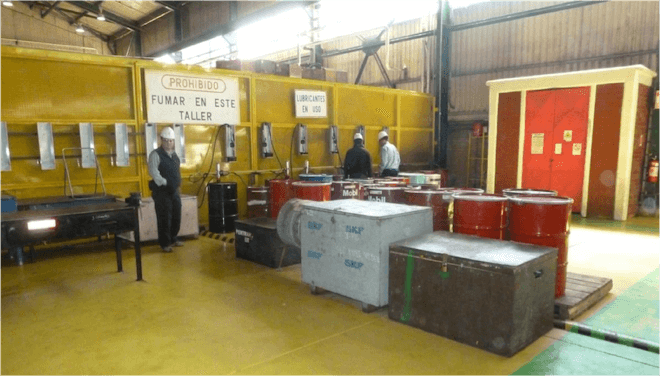We know that we need the support of operations in order to reach top-notch reliability in our plants. But does your operations manager know exactly what your expectations are? Have you identified, communicated and agreed upon exactly what you need operations to do?
This exact question came up last year at a plant in Santiago, Chile*. The maintenance manager, Hector*, didn’t feel he received any help from Luis*, the operations manager. According to maintenance, work orders came in without lead time, operations didn’t take responsibility for the maintenance budget and planned stops were frequently changed.
Luis joked that Hector was a crybaby. He, on the other hand, had his hands full with production planning and the salespeople who constantly changed orders. In Luis’s opinion, Hector should make sure that the equipment ran instead of whining like a bebé. The two friends butted heads like this every day—like two rams. They did it jokingly, but I could see that there was room for improvement in the partnership between maintenance and operations. It’s not about being buddies; it’s about working as a team.
Later when I spoke with them individually, Luis and Hector had completely different ideas of what could be improved and what the problems were. This is despite the fact that they worked side by side 50 hours per week. Some of the problems were definitely maintenance-specific and others originated in operations. Most of the problems, however, were mutual, but they had different views of what the problems were and how to solve them.
When we did a Root Cause Analysis on an overflowing tank, we got a crystal-clear example of the different approaches and thought processes between maintenance and operations. Operations concluded that the root cause was a failed level sensor, while maintenance argued that the operational procedure was the problem. The tank wouldn’t overflow if operating procedures were correct.
We compiled a simple list of the most important things operations has to help maintenance with – in order for them to improve reliability. I hope you (the reader) can go through the list with your operations team and see if you are in sync with each other. You can use it to score how well each process works in your organization. I’m sure you can add a bullet or two that I have missed or add something that’s specific to your particular industry, but I don’t think any of the bullets need to be removed.
Work Management (Planning and Scheduling) – Operations’ Duties Should Include:
- Being a hub for all incoming work order requests as well as filtering them. (Duplicate? Remove unnecessary WOs, etc.)
- Prioritizing work orders with maintenance according to the rules and work processes you’ve put in place.
- Deciding which work orders should be planned on a 4-week rolling schedule.
- Schedule and prepare stops, LoTo, clean equipment and stop equipment on time.
- Communicate work order status to everyone.
- Follow up to make sure that all work has work orders.
- Schedule stops on a 12-month rolling schedule (without changing dates).
Preventative Maintenance – Operations Should:
- Implement correct operating procedures so that reliability problems are avoided. Establish, train and follow up with operators.
- Clean equipment regularly.
- Inspect equipment and components.
Concerning Root Cause Analysis, operations’ responsibilities should include execution, leadership and being an equal partner in the Root Cause Elimination of malfunctions, equipment failure and safety audits.
To make this work in the Santiago Plant, Luis and Hector needed to do the following together:
Create clear work processes for work management (including roles and responsibilities) so that each person in the organization knows exactly what their responsibility is.
- Update operating instructions with information from maintenance. (Which operations processes are creating failures?)
- Improve cleaning routines.
- Train operators in inspections and implement basic inspection rounds.
- Train and implement Root Cause Analysis methods.

Today Luis and Hector are knee-deep in implementation of the bullets above.
They have already fixed all workshops (they are so nice and neat it brought tears to my eyes) and the operations procedures are partially updated. They are still working on implementing better Planning and Scheduling as well as inspections training for operators. With a little help from us, they will get there.
Luis and Hector? Well, they are still heckling each other, laughing and slapping each others’ backs, but now it’s both as friends and as a functioning team.





